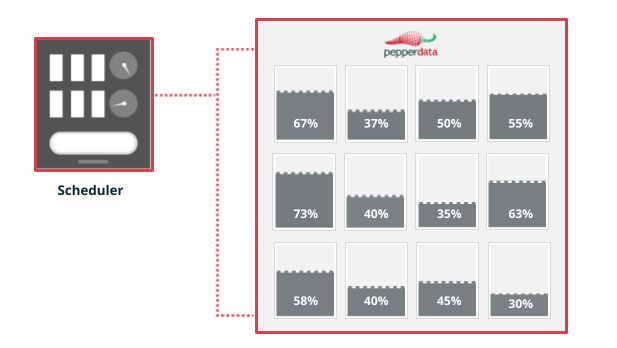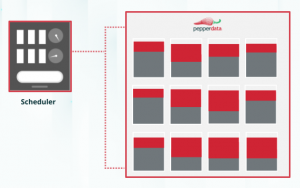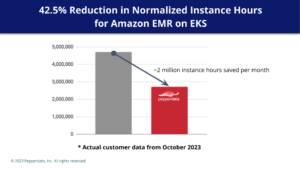Automatically Reduce Cloud Spend for Amazon EMR and Amazon EKS
Pepperdata’s real-time cloud cost optimization solution continuously reclaims waste from your applications running on Amazon EKS and your batch workloads running on Amazon EMR. Customers can see:
Continuous Intelligent Tuning Without Manual Intervention
Pepperdata Capacity Optimizer works autonomously in real time to increase your node level utilization
and reduce your application costs without any code changes or manual tuning.
No Manual Tuning
Pepperdata uses machine learning to dynamically determine where more work can be done in your cluster and automatically applies those optimizations in real time for savings without the need for human intervention.
No Recommendations
Recommendations don’t scale and don’t solve the whole problem. Pepperdata’s real-time cost optimization frees your engineers from the tedium of manually tuning resources or applying recommendations by autonomously tuning your environment.
No Application Changes
Nothing will change when installing and applying Pepperdata to your environment—your application runs the same as it would without it.
CASE STUDY
Autodesk Reduces Amazon EMR Costs by 50% and Boosts Performance with Pepperdata
“Pepperdata allowed us to significantly increase capacity for our Amazon EMR workloads and reduce our EC2 costs by over 50 percent. We can focus on our business, while they optimize for costs and performance.”
—Mark Kidwell, Chief Data Architect, Data Platforms and Services, Autodesk
Read the case study to learn how and why Autodesk relies on Pepperdata for cloud cost optimization.
Node-Level Utilization
System schedulers in Spark or Kubernetes only see node resources based on allocations rather than utilization, leading to wasted resources. Pepperdata Capacity Optimizer communicates to the scheduler that nodes still have unused resources—
which increases your utilization and cost savings.
Without Pepperdata
With Pepperdata
Figure 2: Pepperdata’s real-time cloud cost optimization increases utilization autonomously, which reduces costs without manual intervention.
Optimal Autoscaling Savings
Pepperdata Capacity Optimizer improves your autoscaler outcomes by launching new instances only when existing instances are fully utilized.
The result: Pepperdata autonomously optimizes CPU and memory to run more workloads at the same cost to increase your savings, removing waste so you only pay for what you use.


